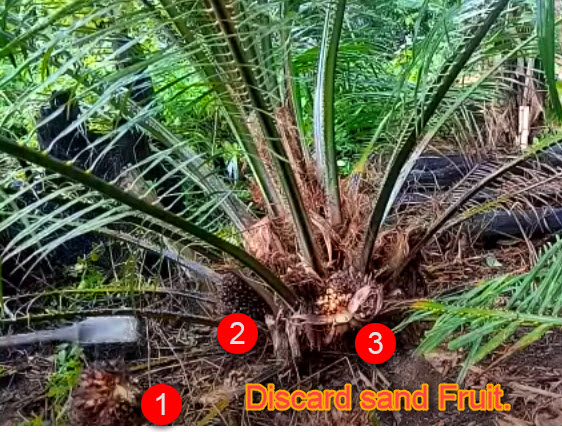Castration or there is also a mention of ablation, which is an activity of removing sand fruit on oil palm plants with the aim of suppressing generative growth and stimulating vegetative growth.
According to Kurian and Peter (2007), castration or ablation is a series of activities to remove all generative products, namely male flowers, female flowers and fruit bunches. Maintaining fruit bunches at the beginning of flowering is considered less profitable because the bunches appear small and their oil yield is low.
Castration was carried out in 3 rotations at 2 month intervals. Then castration was carried out at the age of the plants 18, 20 and 22 months. Sunarko (2007) states that castration can be started if 25% of the plants have started flowering.
This activity is carried out every month, starting from the 14th month to the 26th month after planting. The benefits of castration activities for palm plants include stimulating vegetative growth, conserving the use of nutrients and water, reducing the risk of Tirathaba and marasmus fungi attacks and so that at the first harvest the bunch sizes are bigger, heavier and more perfect (Risza, 2010).
Oil palm plants have started flowering at the age of 14-20 months. To support vegetative growth in the TBM phase, plants that have produced flowers at a young age are castrated (Purwanto, 2010).
Sprouting / pruning leaves (pruning)
Pruning is an effort to reduce some of the leaves on the stems of oil palm plants with specific purposes. When the plants are immature, pruning activities are carried out to support the vegetative growth of the plant, facilitate the harvesting process when the plants have started to produce fruit, besides that pruning on oil palm plants is necessary because oil palm leaves do not fall off easily even though the leaves are dry, the leaves are already dry will fall out a few years later (Setyamidjaja, 2006).
Sprouting is an activity to cut old or unproductive leaf midribs. Sprouting aims to facilitate harvesting, observation of ripe fruit, natural pollination, light entry and wind circulation, preventing loose fruit from getting stuck in the midrib, sanitizing and channeling nutrients to other, more productive parts.
- There are three types of leaf pruning, namely: Sand pruning. Make dry leaves, first fruit or rotten fruit when the plants are 16-20 months old.
- Trimming production. Cut the leaves that grow pile up (songgo dua) as preparation for harvesting when the plants are 20 - 28 years old.
- Pruning maintenance. Remove the two songgo leaves regularly so that there are only 28-54 leaves of the plant. The system commonly used is the "songgo dua" system, where the number of leaf midribs is left only two fronds from the lowest fruit bunch. Repayment rotation in TM is every nine months.

